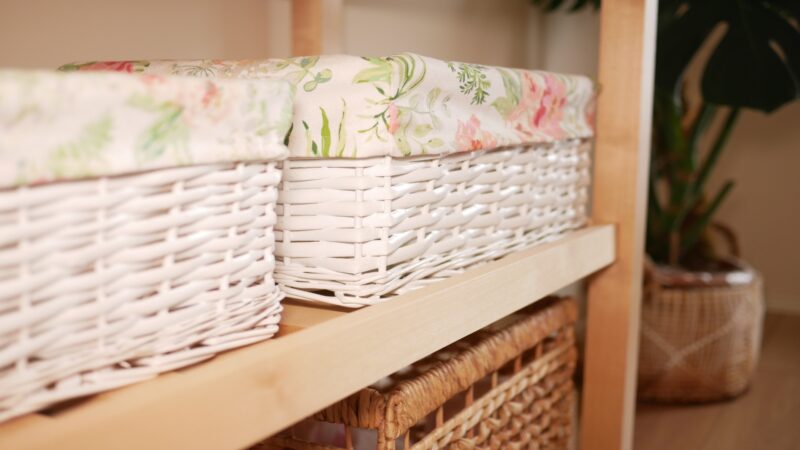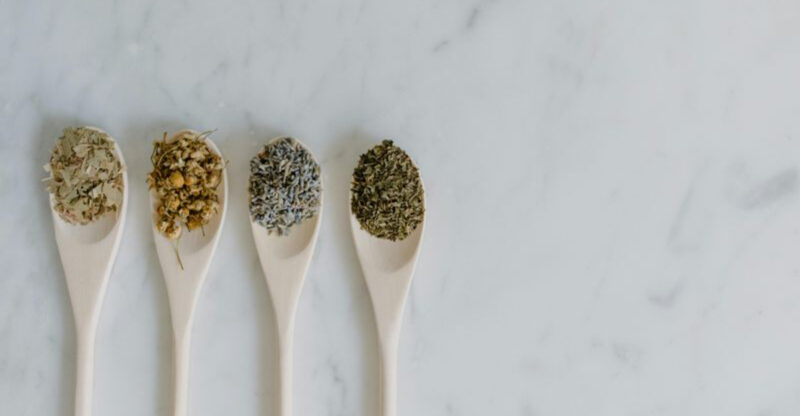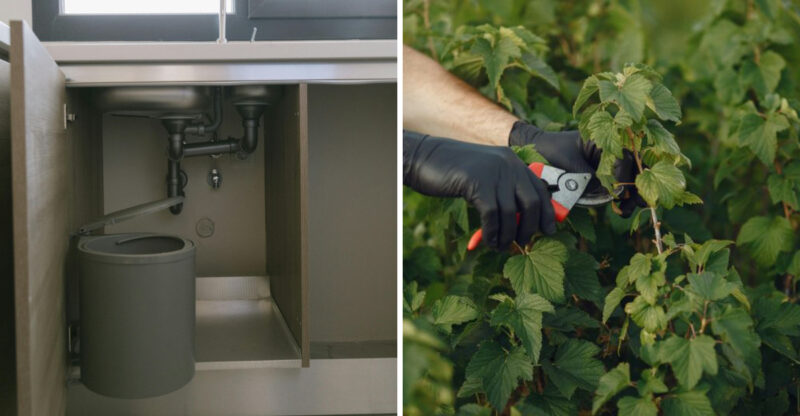30 Sculptural Plants Perfect For Pots And Patios In New York

New York’s patios and balconies deserve plants that look like living art. Sculptural varieties bring bold shapes, textures, and year-round interest to outdoor spaces, even when square footage is limited.
Whether you’re working with a sunny terrace or a shaded stoop, the right plant can transform a simple container into a striking focal point that catches every passerby’s eye.
1. Boxwood (Buxus Sempervirens)
Classic elegance meets low-maintenance charm with this evergreen favorite. Boxwood thrives in containers and tolerates shaping beautifully, making it ideal for those who enjoy a tidy, formal look.
Its dense foliage stays green through winter, providing year-round structure. This plant handles partial shade well, which suits many New York outdoor spaces perfectly. Trimming once or twice a season keeps it looking sharp and sculptural.
2. Dwarf Alberta Spruce (Picea Glauca ‘Conica’)
Picture a miniature Christmas tree that stays compact and never outgrows its pot. Dwarf Alberta Spruce offers that exact vibe, with soft green needles forming a perfect pyramid.
Cold-hardy and slow-growing, this evergreen handles New York winters without fuss. Its symmetrical shape requires zero pruning to maintain that architectural appeal. Position it where it gets full sun for the healthiest growth and richest color.
3. Japanese Yew (Taxus Cuspidata)
Dark, glossy needles give Japanese Yew a sophisticated presence that anchors any patio arrangement. This evergreen adapts to both sun and shade, making it incredibly versatile for different exposures.
Slow growth means less frequent repotting and minimal trimming. Its upright form creates vertical interest without overwhelming smaller spaces. Consider pairing it with lighter-colored plants to make those deep greens pop even more.
4. Hinoki Cypress (Chamaecyparis Obtusa ‘Nana Gracilis’)
Fans of textured foliage should meet Hinoki Cypress, which sports delicate, layered branches that look almost hand-sculpted. Its compact growth habit makes it perfect for container life.
This evergreen prefers consistent moisture and protection from harsh winter winds. The rich green color deepens in cooler weather, adding seasonal interest. Place it near seating areas where folks can appreciate its intricate branching pattern up close.
5. Blue Star Juniper (Juniperus Squamata ‘Blue Star’)
Silvery-blue needles create a cool-toned accent that stands out among typical green plants. Blue Star Juniper grows low and wide, forming a neat mound that softens pot edges.
Drought-tolerant once established, it handles forgotten waterings better than many container plants. Full sun brings out the most vibrant blue coloring. This juniper pairs beautifully with warm terracotta pots or alongside purple and pink bloomers for striking contrast.
6. Feather Reed Grass (Calamagrostis x Acutiflora ‘Karl Foerster’)
Tall, feathery plumes dance with every breeze, bringing movement and sound to outdoor spaces. Feather Reed Grass shoots up narrow and vertical, perfect for adding height without hogging horizontal space.
Golden seed heads emerge in early summer and persist through fall, offering months of visual interest. This grass tolerates clay soil and doesn’t flop over like some ornamental varieties. Plant it in a deep container to support its upright growth habit.
7. Blue Fescue (Festuca Glauca)
Spiky tufts of blue-gray foliage create a modern, almost architectural look that complements contemporary spaces. Blue Fescue stays compact, forming neat little mounds that never sprawl.
This grass prefers well-drained soil and full sun, making it ideal for hot, sunny patios. Its cool color palette works wonderfully alongside stone, concrete, or metal planters. Trim back old foliage in early spring to keep plants looking fresh and tidy.
8. Japanese Forest Grass (Hakonechloa Macra ‘Aureola’)
Golden-striped blades cascade gracefully over pot edges like a gentle waterfall of color. Japanese Forest Grass brings a softer, more flowing texture compared to upright grasses.
Partial shade suits this beauty best, and it actually appreciates some protection from intense afternoon sun. The chartreuse coloring brightens shadier corners where many plants struggle. Come fall, foliage shifts to warm peachy-pink tones before going dormant for winter.
9. New Zealand Flax (Phormium Tenax)
Bold, sword-shaped leaves fan out dramatically, creating instant drama in any container arrangement. New Zealand Flax comes in stunning color variations, from deep bronze to variegated stripes.
This architectural plant tolerates wind and handles urban pollution surprisingly well. While not fully winter-hardy in New York, it can be moved indoors during the coldest months. Full sun encourages the most intense leaf coloring and sturdy growth habit throughout the season.
10. Red Yucca (Hesperaloe Parviflora)
Arching, grass-like foliage topped with coral-pink flower spikes creates a desert-inspired look that feels surprisingly at home in urban settings. Red Yucca brings a southwestern flair without being overly prickly.
Drought-tolerant and low-maintenance, it blooms prolifically from late spring through summer. Hummingbirds adore those tubular flowers, adding wildlife interest to city patios. Bring this one indoors before hard frost arrives, as it prefers milder winter conditions.
11. Agave (Agave Americana Or Agave Parryi)
Thick, sculptural leaves form a striking rosette that looks like living art. Agave brings bold geometry and a modern aesthetic to container gardens.
These succulents need minimal water and thrive on neglect, perfect for busy plant parents. Their blue-gray coloring adds cool-toned contrast against warm brick or wood surroundings. Treat agave as a seasonal accent in New York, bringing it indoors before freezing temperatures hit.
12. Snake Plant (Sansevieria trifasciata)
Upright, sword-shaped leaves with striking variegation make Snake Plant a foolproof choice for beginners. This succulent tolerates low light, irregular watering, and general neglect better than almost any other plant.
Its vertical growth habit fits narrow spaces beautifully. Snake Plant also purifies air, though that benefit matters more indoors than on open patios. Move it inside when temperatures drop below fifty degrees to prevent cold damage.
13. Bird Of Paradise (Strelitzia Reginae)
Broad, paddle-shaped leaves create a tropical vibe that transports you straight to warmer climates. Bird of Paradise grows large and bold, demanding attention as a statement piece.
With proper care and warmth, it produces spectacular orange and blue flowers that truly resemble exotic birds. This plant needs bright light and consistent moisture during the growing season. Bring it indoors before frost, as it cannot tolerate freezing temperatures at all.
14. Cast Iron Plant (Aspidistra Elatior)
Earning its name from near-indestructible toughness, Cast Iron Plant thrives where others fail. Broad, arching leaves bring lush greenery to shady spots that get little direct sun.
This plant tolerates neglect, low light, and inconsistent watering without complaint. Its slow growth means less maintenance and infrequent repotting. Dark green foliage provides a calming backdrop for brighter bloomers or variegated companions in mixed container arrangements.
15. Elephant Ear (Colocasia Esculenta)
Enormous, heart-shaped leaves create instant jungle vibes on any patio. Elephant Ear grows fast and large, making a dramatic statement in just one season.
This tropical beauty loves moisture and rich soil, rewarding consistent care with impressive foliage. Leaves can reach two feet across when conditions are right. Dig up tubers before frost and store them indoors over winter, then replant in spring for another season of tropical flair.
16. Coral Bells (Heuchera Spp.)
Ruffled leaves in shades of purple, burgundy, lime, and coral bring year-round color to containers. Coral Bells offer foliage interest that outlasts most flowering plants.
Delicate flower spikes appear in late spring, adding vertical interest above those gorgeous leaves. This perennial tolerates partial shade and handles New York winters when properly mulched. Mix different colored varieties in one large pot for a vibrant, layered effect that changes with the seasons.
17. Hostas (Variegated Varieties)
Lush, variegated foliage brings brightness to shady corners where colorful flowers struggle. Hostas come in countless leaf patterns, from bold stripes to delicate edges.
These shade-lovers grow reliably in containers with minimal fuss. Their mounding habit softens hard pot edges and fills space generously. Lavender or white flower spikes emerge in summer, adding a sweet bonus to the already impressive foliage display throughout the season.
18. Japanese Maple (Acer Palmatum Dwarf Varieties)
Delicate, lacy foliage in shades of red, orange, or green makes Japanese Maple a true showstopper. Dwarf varieties stay compact enough for container life while maintaining their elegant branching structure.
Fall color rivals any tree in the park, with leaves turning brilliant crimson or gold. These maples prefer partial shade and consistent moisture. Protect containers from harsh winter winds and consider wrapping pots to prevent root damage during freezing weather.
19. Coleus (Plectranthus Scutellarioides)
Wildly colorful foliage in electric combinations makes Coleus a favorite for instant impact. Patterns range from subtle edges to bold splashes of pink, burgundy, lime, and orange.
This fast-growing annual fills containers quickly and tolerates both sun and shade, depending on the variety. Pinching back encourages bushier growth and prevents legginess. Coleus adds personality and punch to mixed planters or shines as a solo performer in statement pots.
20. Ornamental Cabbage & Kale (Brassica Oleracea)
Ruffled rosettes in shades of purple, pink, and cream bring unexpected elegance to fall and winter containers. Ornamental cabbage and kale actually improve in color as temperatures drop.
These cool-season beauties tolerate frost and even light snow, providing color when most annuals have faded. Their sculptural form resembles giant roses more than vegetables. Plant them in autumn for a display that lasts until hard freezes arrive in late winter.
21. Majesty Palm (Ravenea Rivularis)
Feathery, arching fronds instantly evoke vacation vibes and tropical relaxation. Majesty Palm grows upright with graceful foliage that sways gently in the breeze.
This palm needs bright, indirect light and consistent moisture to thrive. While it makes a stunning seasonal accent outdoors, it cannot handle cold temperatures. Bring it indoors well before frost threatens, where it can continue adding tropical flair to interior spaces through winter.
22. Windmill Palm (Trachycarpus Fortunei)
Fan-shaped fronds and a distinctive fibrous trunk give Windmill Palm serious character. This palm ranks among the hardiest, tolerating temperatures down to around ten degrees Fahrenheit.
Its compact root system adapts well to container life, and slow growth means years before repotting becomes necessary. Full sun to partial shade works fine for this adaptable palm. Protect containers during the coldest winter nights, or consider moving them to sheltered locations during extreme cold snaps.
23. Banana Plant (Musa Basjoo)
Massive, paddle-shaped leaves create an unmistakable tropical statement that commands attention. Banana plants grow quickly during warm months, adding several feet of height in a single season.
While the foliage dies back with frost, the roots can survive cold winters if heavily mulched. Container-grown plants should be moved to protected areas or heavily insulated. Consistent moisture and feeding during the growing season encourage the most impressive leaf development and overall plant vigor.
24. Yucca (Yucca Filamentosa ‘Color Guard’)
Sword-shaped leaves with bright yellow stripes bring bold structure and color to sunny spots. Yucca forms a spiky rosette that looks equally at home in modern or rustic settings. This drought-tolerant plant handles neglect gracefully and rarely needs attention beyond occasional watering.
Tall flower spikes emerge in summer, loaded with creamy white blooms. Color Guard variety is reasonably cold-hardy, though container-grown plants benefit from winter protection during the harshest weather.
25. Sago Palm (Cycas Revoluta)
Dark green, feather-like fronds radiate from a central trunk, creating a prehistoric look that fascinates plant lovers. Sago Palm grows extremely slowly, making it a long-term container resident.
Despite its name, this plant is actually a cycad, not a true palm. It prefers bright light and well-drained soil. Bring Sago Palm indoors before temperatures drop below fifty degrees, as it cannot tolerate frost or freezing conditions at all.
26. Hardy Hibiscus (Hibiscus Moscheutos)
Dinner-plate-sized blooms in shades of red, pink, and white make Hardy Hibiscus impossible to ignore. Flowers can reach ten inches across, creating a spectacular summer display.
This perennial dies back to the ground in winter but returns reliably each spring in New York. Large, bold foliage provides structure even when plants are not blooming. Full sun and consistent moisture encourage the most prolific flowering throughout the entire growing season.
27. Hydrangea (Hydrangea Macrophylla Dwarf Forms)
Showy, rounded flower clusters in shades of blue, pink, or white create classic charm that never goes out of style. Dwarf hydrangeas stay compact while delivering the same impressive blooms as larger varieties.
These shrubs prefer morning sun with afternoon shade and consistent moisture. Flower color can shift based on soil pH, adding an element of surprise. Protect containers from harsh winter winds and consider insulating pots to help roots survive cold temperatures successfully.
28. Dwarf Canna Lily (Canna Indica ‘Tropicanna’)
Striped foliage in burgundy, orange, and green steals the show even before flowers appear. Tropicanna variety stays more compact than traditional cannas while delivering the same tropical drama.
Bright orange or red blooms emerge atop the colorful leaves throughout summer. Cannas love heat, sun, and generous watering during active growth. Dig up rhizomes after frost and store them indoors over winter, then replant in spring for another season of bold color.
29. Lavender (Lavandula Angustifolia)
Fragrant purple flower spikes and silvery foliage bring sensory delight to sunny patios. Lavender attracts pollinators while releasing its signature scent with every brush of a hand.
This Mediterranean native prefers full sun, excellent drainage, and minimal watering once established. Its compact, mounding habit suits containers beautifully. Harvest flower stems for drying, or simply enjoy them fresh while they perfume your outdoor space throughout the summer months.
30. Rosemary (Rosmarinus Officinalis)
Needle-like foliage releases an intoxicating aroma when touched, making this herb both beautiful and functional. Rosemary grows upright or trailing, depending on the variety chosen.
Small blue flowers appear in spring, adding delicate color to the evergreen foliage. This Mediterranean herb loves full sun and well-drained soil. Bring rosemary indoors before hard frost, placing it in a bright window where you can continue harvesting fresh sprigs all winter long.






